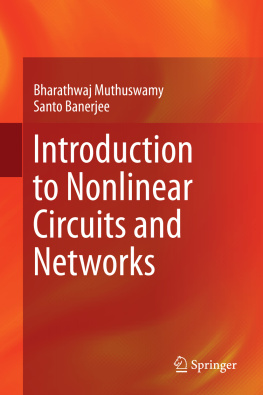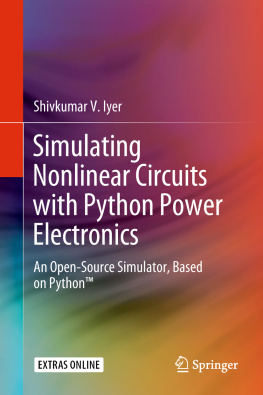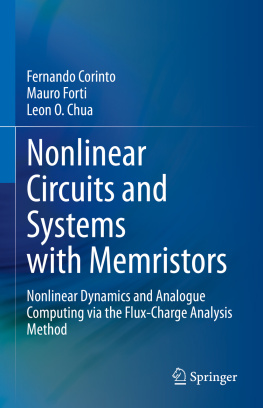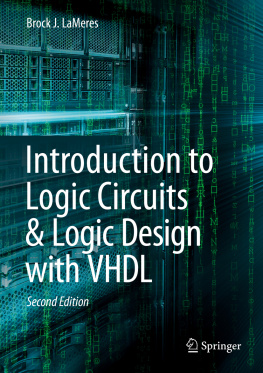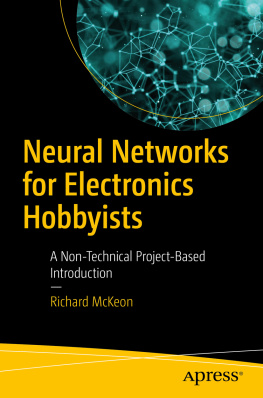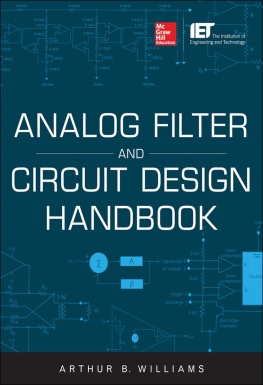Bharathwaj Muthuswamy - Introduction to Nonlinear Circuits and Networks
Here you can read online Bharathwaj Muthuswamy - Introduction to Nonlinear Circuits and Networks full text of the book (entire story) in english for free. Download pdf and epub, get meaning, cover and reviews about this ebook. year: 2019, publisher: Springer, genre: Science. Description of the work, (preface) as well as reviews are available. Best literature library LitArk.com created for fans of good reading and offers a wide selection of genres:
Romance novel
Science fiction
Adventure
Detective
Science
History
Home and family
Prose
Art
Politics
Computer
Non-fiction
Religion
Business
Children
Humor
Choose a favorite category and find really read worthwhile books. Enjoy immersion in the world of imagination, feel the emotions of the characters or learn something new for yourself, make an fascinating discovery.
- Book:Introduction to Nonlinear Circuits and Networks
- Author:
- Publisher:Springer
- Genre:
- Year:2019
- Rating:3 / 5
- Favourites:Add to favourites
- Your mark:
- 60
- 1
- 2
- 3
- 4
- 5
Introduction to Nonlinear Circuits and Networks: summary, description and annotation
We offer to read an annotation, description, summary or preface (depends on what the author of the book "Introduction to Nonlinear Circuits and Networks" wrote himself). If you haven't found the necessary information about the book — write in the comments, we will try to find it.
Introduction to Nonlinear Circuits and Networks — read online for free the complete book (whole text) full work
Below is the text of the book, divided by pages. System saving the place of the last page read, allows you to conveniently read the book "Introduction to Nonlinear Circuits and Networks" online for free, without having to search again every time where you left off. Put a bookmark, and you can go to the page where you finished reading at any time.
Font size:
Interval:
Bookmark:
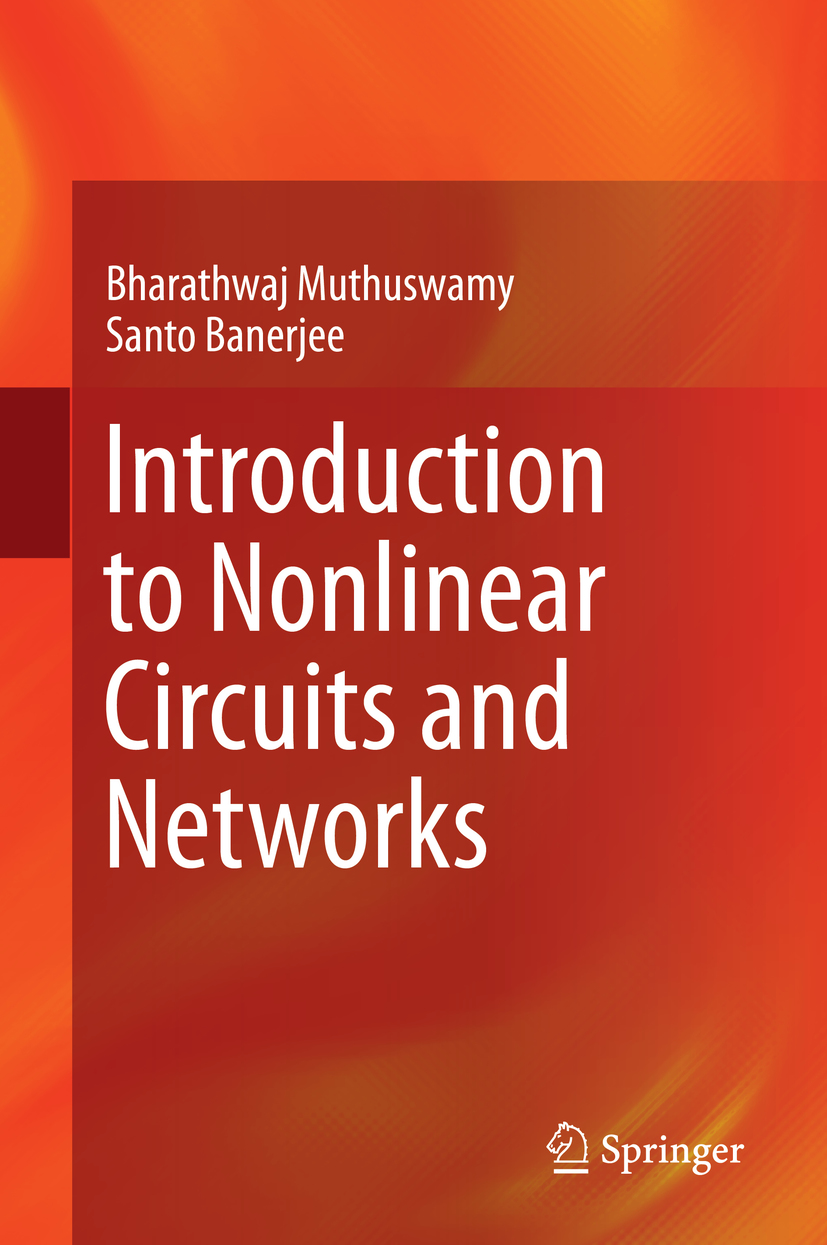

This Springer imprint is published by the registered company Springer Nature Switzerland AG
The registered company address is: Gewerbestrasse 11, 6330 Cham, Switzerland
Dedicated to Leon O. Chua, Robert M. Fano, Lan J. Chu, and Richard B. Adler
The book is completely self-contained and does not assume any prior knowledge of circuit theory. It is simply assumed that the reader has taken a first-year undergraduate (elementary) course in differential and integral calculus, along with elementary physics courses in classical mechanics and electrodynamics (with an exposure to matrix algebra). Hence, this book should be accessible to any motivated individual who has taken the abovementioned courses.
- The book also covers topics that are not typically found in standard circuit textbooks, such as:
Memristors . The justification is that although (as the reader will learn from this book) memristors are not used in linear circuit theory, a memristor is the fourth fundamental circuit element. Hence, it is only logical that any text on circuit theory discuss memristors. Thus, ideally our book would have been titled Introduction to Circuits and Networks . But then a casual reader might mistake this book for emphasizing only linear circuit theory. However, as this book will show, nonlinear circuit theory (memristor included) is accessible to anyone with the correct background who is interested in fundamental circuit theoretic concepts.
Nonlinear chaotic circuits . We believe that chaotic circuits elegantly integrate a variety of concepts from circuit theory and hence form a natural repository of projects for the reader to understand all the concepts discussed in this book.
Nonlinear operational amplifier circuits, for example, Schmitt triggers . As will be clear from this book, accurate analysis of Schmitt triggers will help dispel common misconcepts about the nature of hysteresis in electronic circuits and will also help the reader understand the deep concept of modeling.
Each chapter has illustrative examples, exercises, and a lab component. We will also have (maximum 20 min) conceptual videos for each chapter and end-of-chapter exercises (lab included) online . The purpose of these supplementary videos is to ( a ) highlight major concepts in each chapter and ( b ) provide solutions (hints for open-ended problems) to end-of-chapter exercises. This extensive use of electronic aids is the twenty-first century approach to nonlinear circuits. In the process, we hope to transform fundamental ideas in nonlinear circuits from the classic works of Leon O. Chua and others. Nevertheless, the goal of this books electronic aids is to supplement, not replace, rigor.
First courseresistive networks: only excluding material on dynamic elements in Chaps..
Second coursedynamic networks: cover dynamic elements in Chaps..
Hence, the way we have organized the chapters is based on the fact that, in circuit theory, the laws of elements are distinct from the laws of networks.
Our goal in writing this book is simple: a student who thoroughly understands the concepts in this book will be well prepared for any follow-up course in circuit theory. For readers who are further interested in advanced concepts, we are planning to write a follow-up volume, Advanced Nonlinear Circuits and Networks . A reader who thoroughly understands the material in both volumes will maximize knowledge gained from any follow-up electrical engineering course, since our books on circuit theory emphasize both the underlying mathematics and physical experiments.
Each chapter starts with a visual epigraph: the purpose is to evoke the intellectual curiosity of the reader. Chapters are divided into sections and subsections for clarity.
Font size:
Interval:
Bookmark:
Similar books «Introduction to Nonlinear Circuits and Networks»
Look at similar books to Introduction to Nonlinear Circuits and Networks. We have selected literature similar in name and meaning in the hope of providing readers with more options to find new, interesting, not yet read works.
Discussion, reviews of the book Introduction to Nonlinear Circuits and Networks and just readers' own opinions. Leave your comments, write what you think about the work, its meaning or the main characters. Specify what exactly you liked and what you didn't like, and why you think so.

